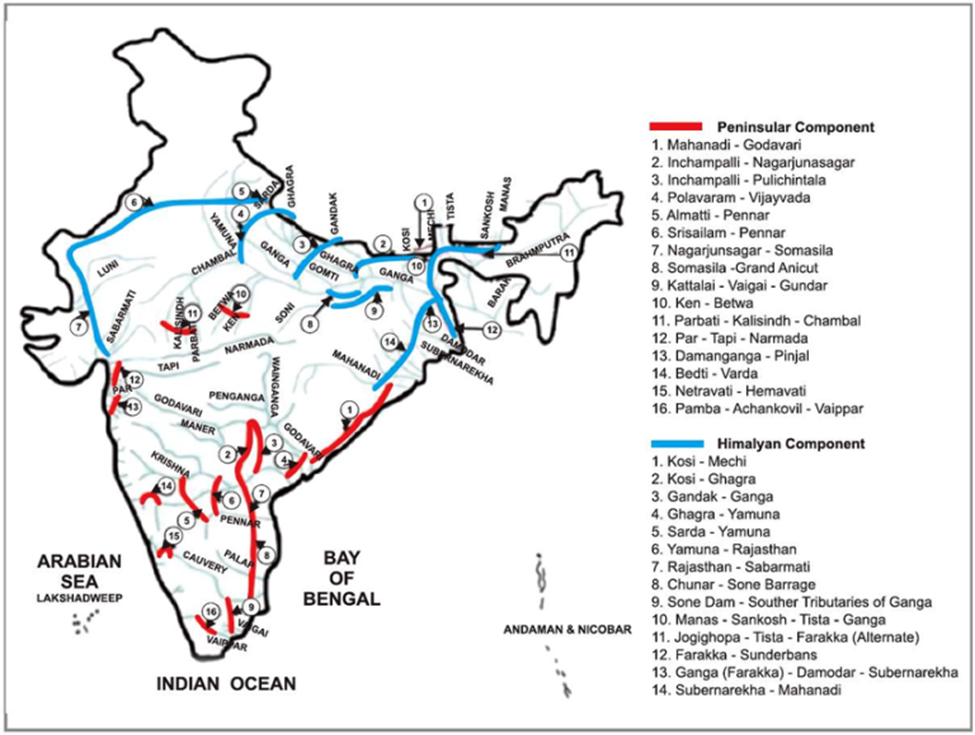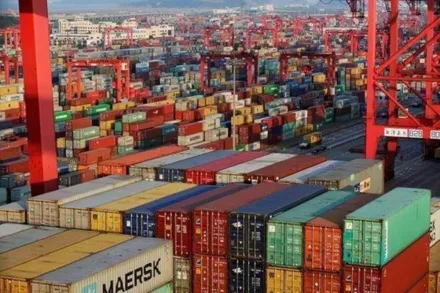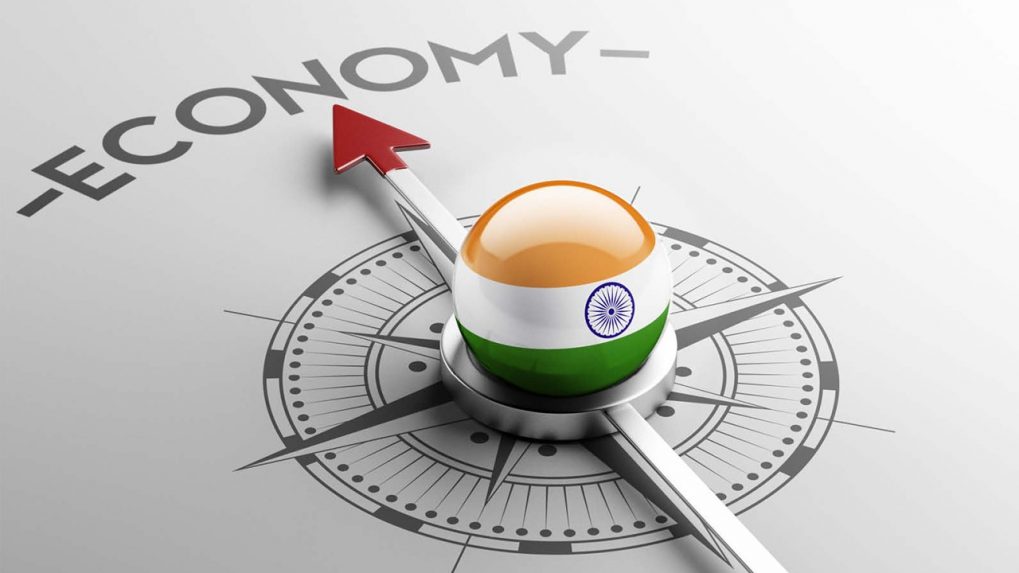- Courses
- GS Full Course 1 Year
- GS Full Course 2 Year
- GS Full Course 3 Year
- GS Full Course Till Selection
- Answer Alpha: Mains 2025 Mentorship
- MEP (Mains Enrichment Programme) Data, Facts
- Essay Target – 150+ Marks
- Online Program
- GS Recorded Course
- Polity
- Geography
- Economy
- Ancient, Medieval and Art & Culture AMAC
- Modern India, Post Independence & World History
- Environment
- Governance
- Science & Technology
- International Relations and Internal Security
- Disaster Management
- Ethics
- NCERT Current Affairs
- Indian Society and Social Issue
- NCERT- Science and Technology
- NCERT - Geography
- NCERT - Ancient History
- NCERT- World History
- NCERT Modern History
- CSAT
- 5 LAYERED ARJUNA Mentorship
- Public Administration Optional
- ABOUT US
- OUR TOPPERS
- TEST SERIES
- FREE STUDY MATERIAL
- VIDEOS
- CONTACT US
River Interlinking
River Interlinking
01-02-2024
Context: The Central government and the state governments of Madhya Pradesh and Rajasthan have signed an agreement for the ambitious Eastern Rajasthan Canal Project. It is the second project under the national perspective plan of interlinking of rivers (ILR) program of the Government of India. The Ken-Betwa Link Project (KBLP) is the first project under this plan.
What is the National Perspective Plan for the Interlinking of Rivers (ILR) program?
- In 1980, the Ministry of Irrigation, now called the Ministry of Jal Shakti, created the National Perspective Plan (NPP) for the Interlinking of Rivers (ILR).
- This plan aims to link 37 rivers in India to transfer water from regions with surplus water to those with shortages.
- It is now known as the National River Linking Project (NRLP) which has 2 components:
- Himalayan Component to develop 14 linkages among different rivers
- Peninsular Component to develop 16 linkages among different rivers

What is the Core Idea behind the Interlinking of Rivers?
- The core idea is to deal with the country's water problems by moving extra water from places that have surplus water to places that don't have enough by building canals and reservoirs.
- The Himalayan Rivers like the Ganga, Yamuna, and Brahmaputra have surplus water as they receive water from rainfall as well as the melting of snow from the Himalayas.
- On the other hand, the Peninsular rivers like Godavari, and Cauvery are dependent on rainfall due to which they lack enough water.
- Also, the pattern of rainfall is not the same in India. Western and North Western part of the country receives lesser rainfall, whereas Eastern and North Eastern part receives surplus rainfall.
- The droughts and floods in India can also be managed effectively by interlinking rivers.
- Hence, interlinkage was proposed as a solution before independence by Sir Arthur Cotton and after independence by Dr. K.L. Rao.
What are the Advantages of Interlinking Rivers?
- Water Re-distribution: It helps balance water distribution across different regions in India.
- Inland navigation: It can improve transportation by boats or ships, reducing logistic costs, pollution, and traffic.
- Irrigation: It can bring around 35 Million hectares of land under irrigation.
- Power generation: It can generate electricity up to 35 Gigawatts through hydropower generation plants at the reservoirs.
- Water supply: It can ensure sufficient water for drinking, farming, fishing and other needs.
What are the Challenges associated with the Interlinking of Rivers?
- Climate Change: Climate Change can change the water availability in various river regions over time. Studies suggest that by 2100, about 1/3rd of the Hindukush Glacier could melt, potentially leading to insufficient water for Himalayan rivers as well.
- Land Requirement: To implement the interlinking of rivers, a lot of land needs to be taken from people. Such people would be displaced and their livelihoods would be affected.
- Financial Burden: In 2001, the cost of the entire plan was estimated to be more than Rs. 5 Lakh crore.
- Environmental impact: Such intervention in nature may have a large impact on the ecology and biodiversity existing within the rivers. Also, when a more polluted river gets linked with a cleaner one, it will pollute the other.
- Viability of the project: To generate electricity, the water needs to be pumped to a higher level. But the pumping itself may require more electricity than what the hydropower plant would generate afterwards.
- International Issues: It might affect other countries' rights to river water and could cause political problems with states that are affected. For example, the diversion of the Ganga River would mean Bangladesh will receive less water.
- Domestic Politics: Some states such as Kerala, Andhra Pradesh, and Sikkim oppose the idea of interlinkage because they might lose some water.
- Changing River Paths: Rivers change their path over time, so it's hard to know if the plan will work well in the future.
What are the suggestions given by scholars?
- Promote efficient water usage: Promote water-saving methods like drip irrigation and efficient groundwater management, such as recharging aquifers, to lower water usage overall. Aquifers are like underground water storage tanks that hold water.
- Reduce virtual water export: When India exports crops which require a lot of water for production such as Rice, India is virtually exporting water to other countries. Hence, India should rather reduce the export or start the import of such crops.
- Explore alternative approaches: Explore other options like the National Waterway Project, which uses floodwaters for navigation. This reduces the dependence on heavy pumping of water.
- Environmental Assessment: Conduct comprehensive environmental impact assessments and implement measures to minimize the ecological and biodiversity impacts of river interlinking projects, including measures to address water pollution.
- Land Acquisition and Rehabilitation: Make sure people who lose their land are treated fairly. Give them proper compensation and help them find new homes and jobs so they can continue their lives smoothly.
- Diplomatic Engagement: Engage in diplomatic negotiations with neighbouring countries to address concerns about water rights and potential political conflicts arising from river interlinking projects.



